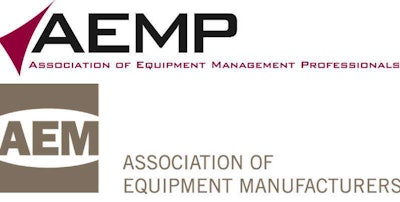
What the program does is standardize the telematics data from different brands of equipment and trucks so you can see your entire fleet telematics information on a single website that you control—without having to search out each and every manufacturer’s website.
With the AEM/AEMP standard, if you have five brands of equipment you don’t have to visit five websites to collect that data.
Much like a beta test of software, the standard is still in draft form. But is has been agreed upon by most major OEMs and third party telematics providers. It is also a significant upgrade from the original AEMP telematics standard with 19 data points covered and fault code capability.
While the draft is available now, the associations urge users to note that it is still a work in progress and that the release is to help contractors, fleet managers, distributors, rental houses and others to become familiar with its contents for business planning purposes. The final language is dependent on completion of the ISO acceptance process.
Access to the AEM/AEMP draft telematics standard is free, but you have to sign up via the AEM or AEMP websites to get the program and receive future updates or additional documentation. The associations are also encouraging participation in the API developer group.
If you’re not familiar with the term API, this is a type of software code that uses server-to-server communication standards. According to the website HowStuffWorks an API:
“…is a set of programming instructions and standards for accessing a Web-based software application or Web tool. A software company releases its API to the public so that other software developers can design products that are powered by its service.”
What this means is that the API acts as an intermediary, allowing the OEM data feeds to be translated and imported into any contractor’s or fleet manager’s business systems and back office software. The API also uses secure internet protocols to protect manufacturers’ proprietary information
Although it does not cover it currently, the next step in the process is to cover crane data fields followed by mobile elevating work platforms and air compressors.












